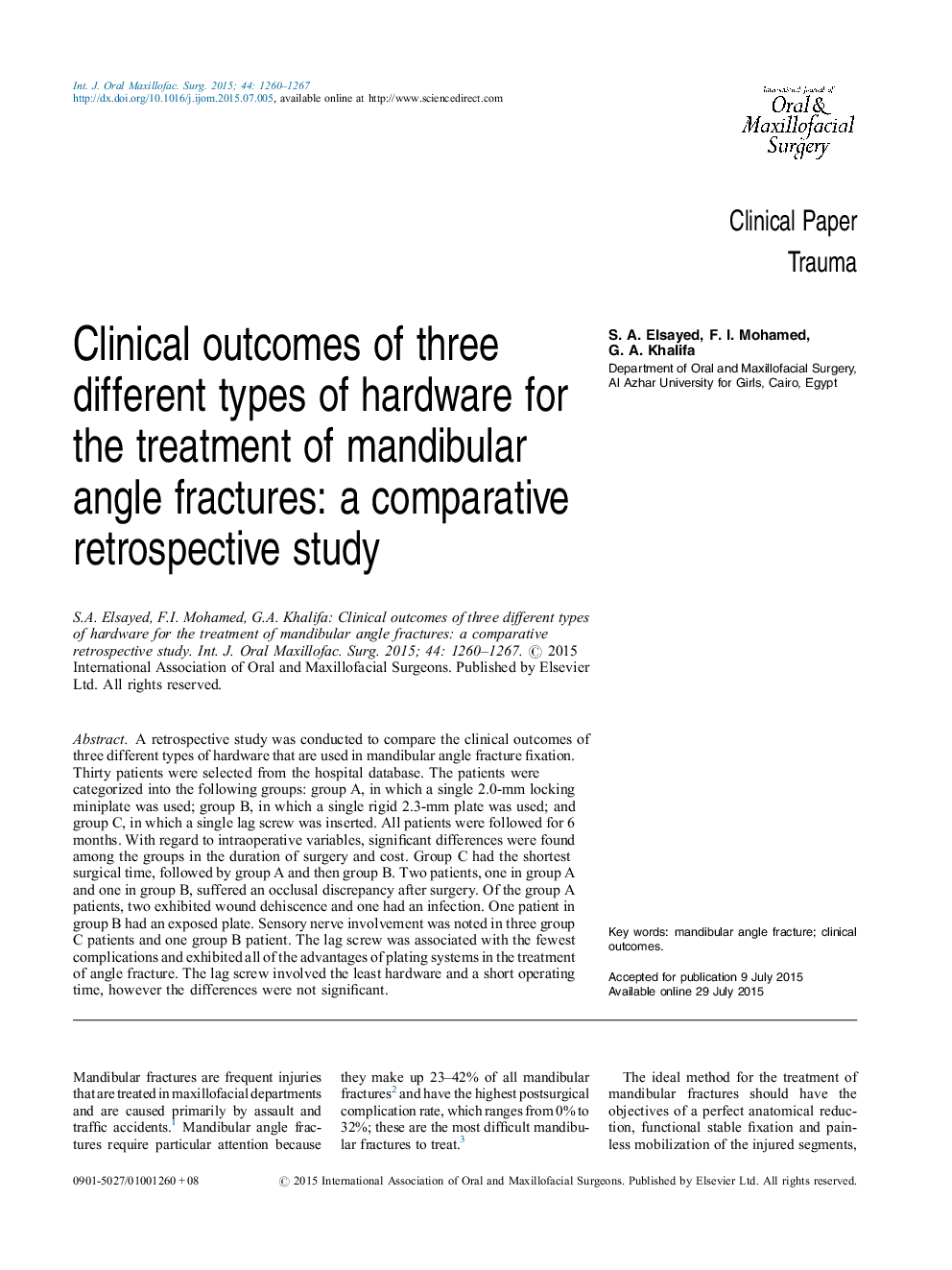| Article ID | Journal | Published Year | Pages | File Type |
|---|---|---|---|---|
| 3132130 | International Journal of Oral and Maxillofacial Surgery | 2015 | 8 Pages |
A retrospective study was conducted to compare the clinical outcomes of three different types of hardware that are used in mandibular angle fracture fixation. Thirty patients were selected from the hospital database. The patients were categorized into the following groups: group A, in which a single 2.0-mm locking miniplate was used; group B, in which a single rigid 2.3-mm plate was used; and group C, in which a single lag screw was inserted. All patients were followed for 6 months. With regard to intraoperative variables, significant differences were found among the groups in the duration of surgery and cost. Group C had the shortest surgical time, followed by group A and then group B. Two patients, one in group A and one in group B, suffered an occlusal discrepancy after surgery. Of the group A patients, two exhibited wound dehiscence and one had an infection. One patient in group B had an exposed plate. Sensory nerve involvement was noted in three group C patients and one group B patient. The lag screw was associated with the fewest complications and exhibited all of the advantages of plating systems in the treatment of angle fracture. The lag screw involved the least hardware and a short operating time, however the differences were not significant.
